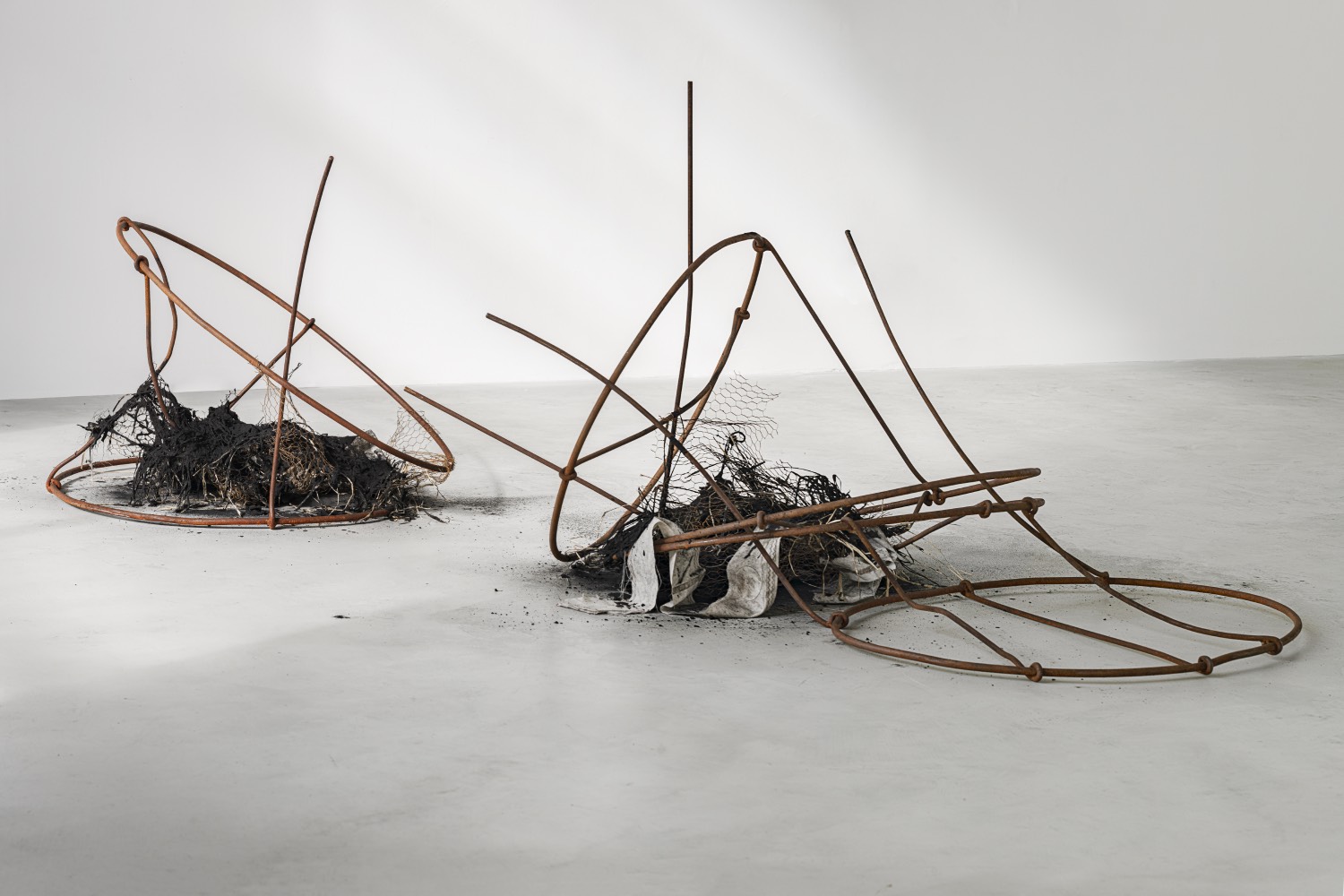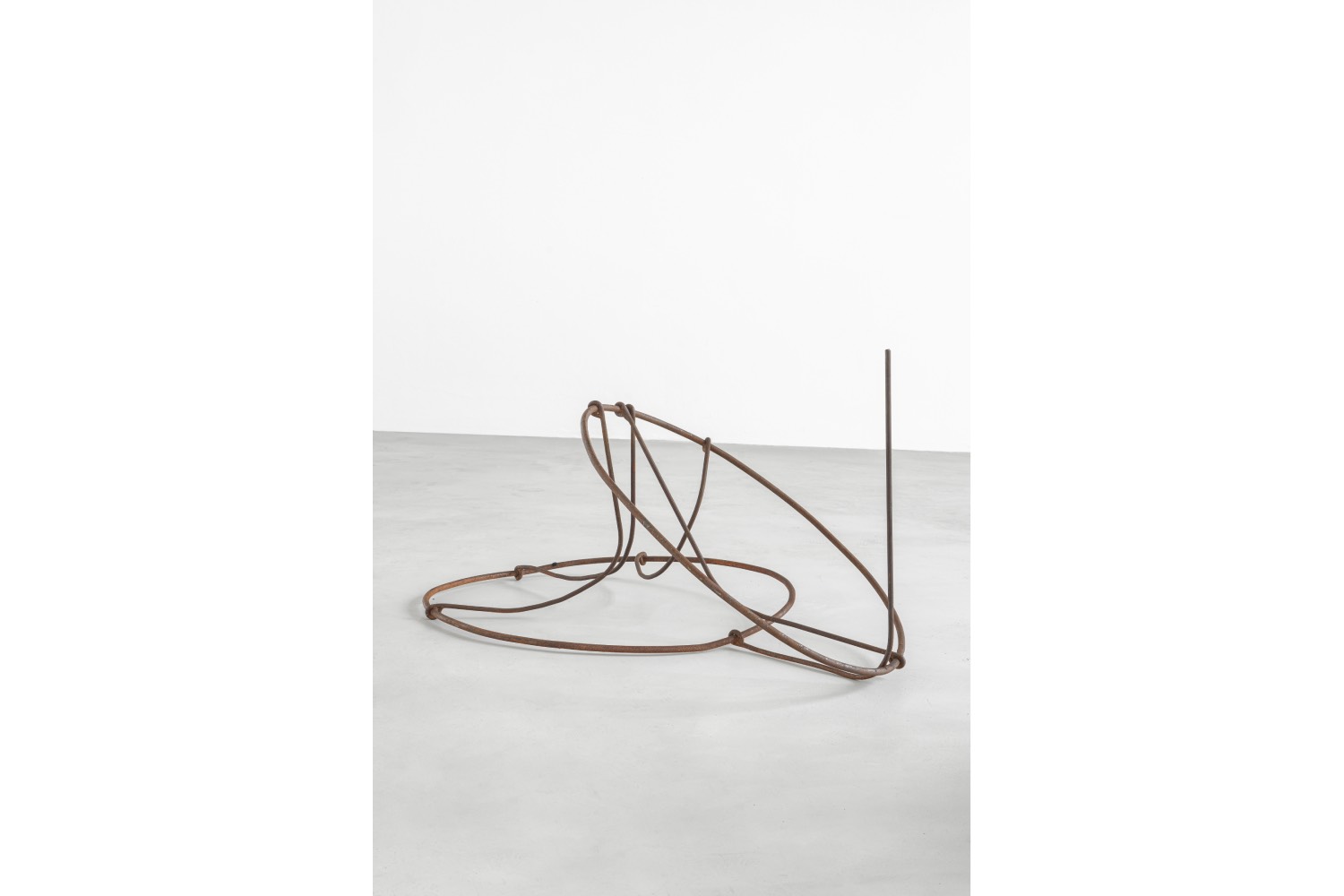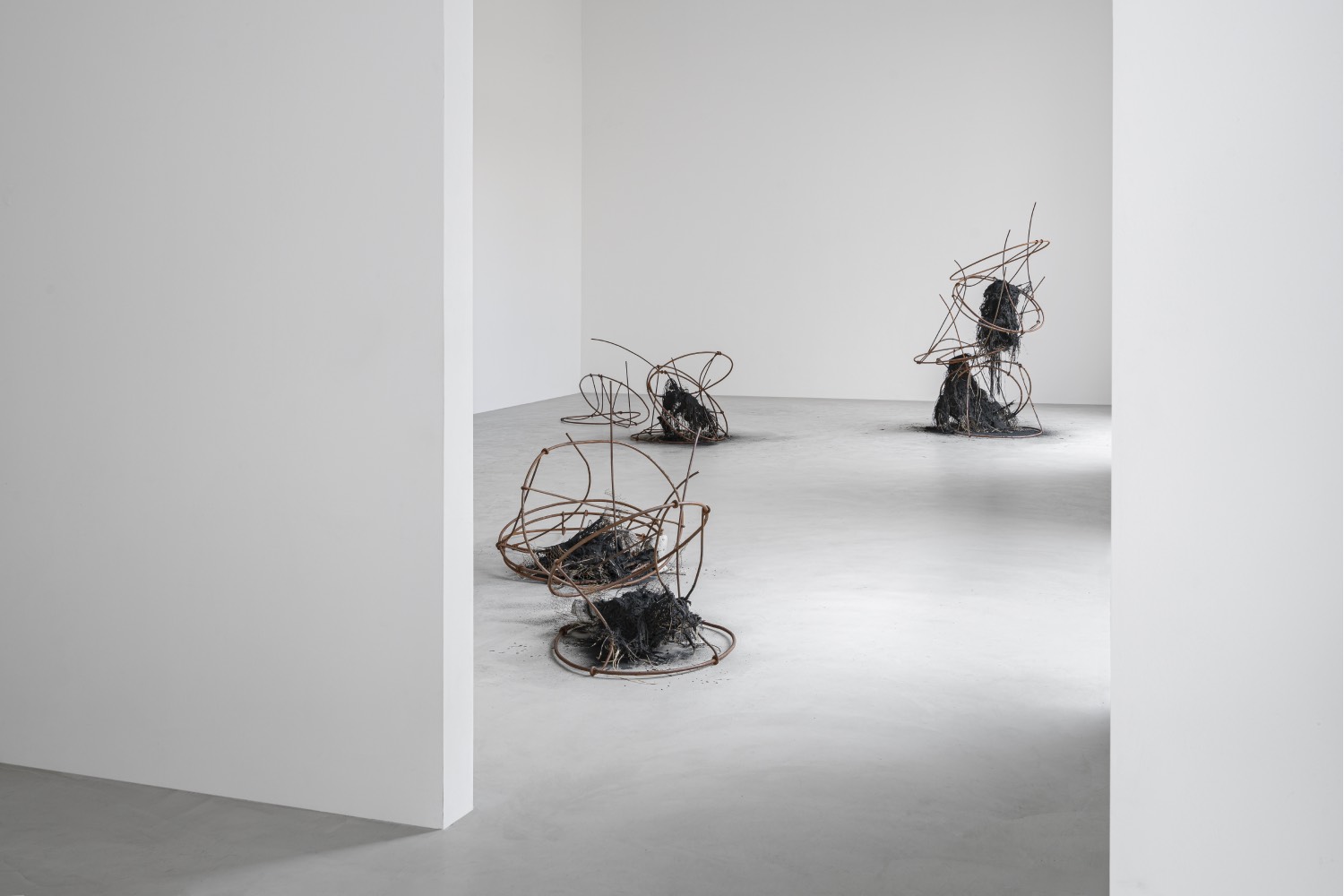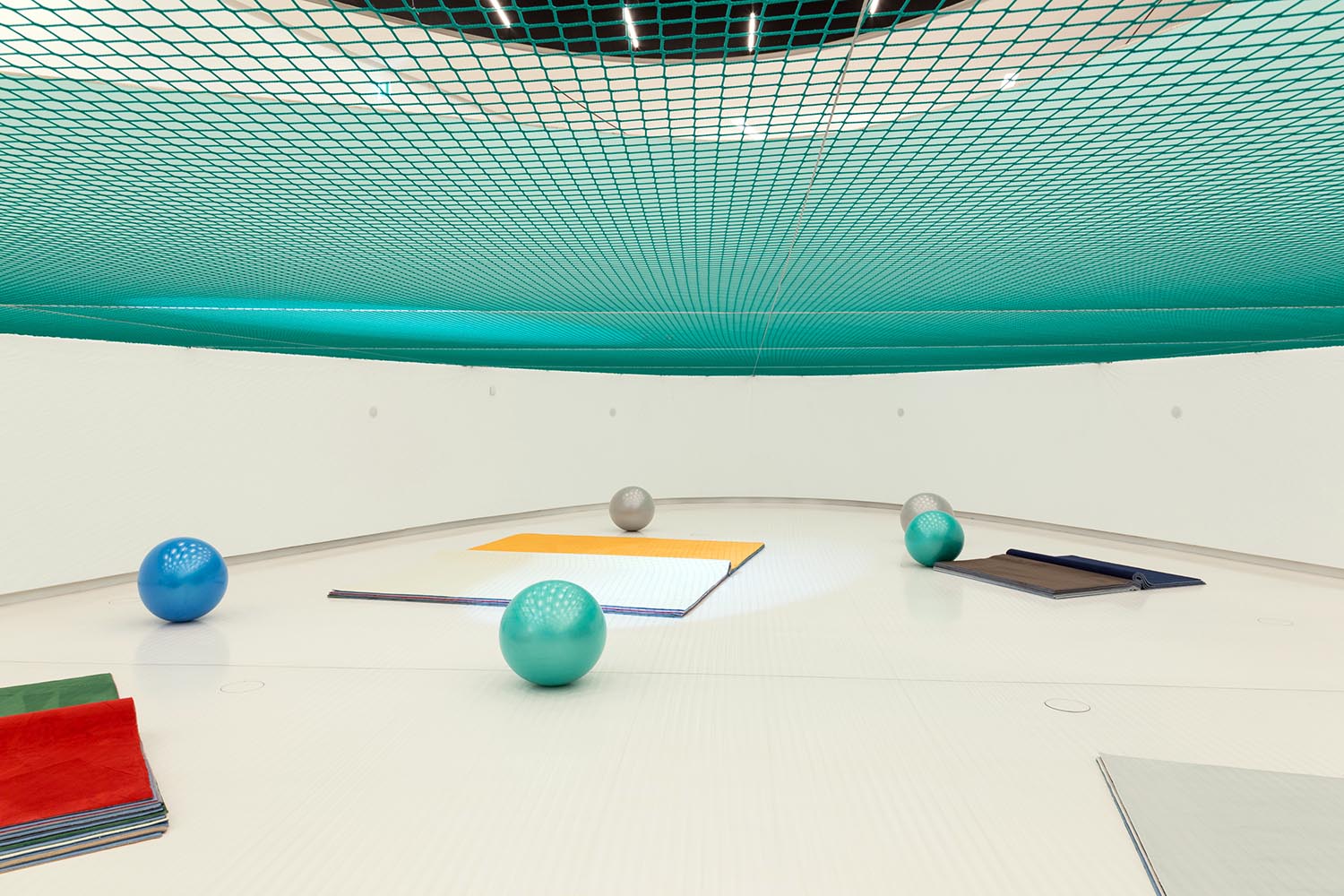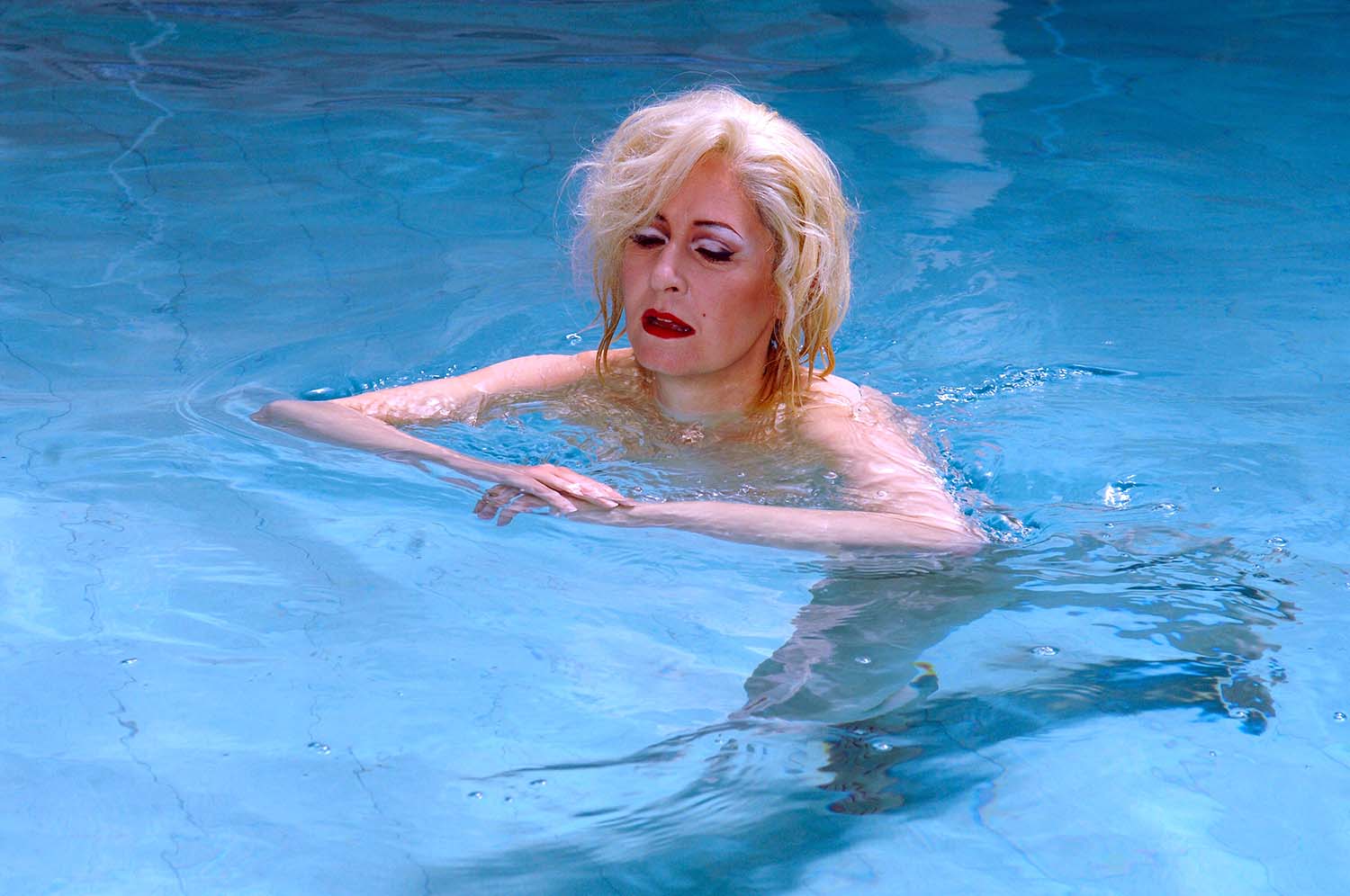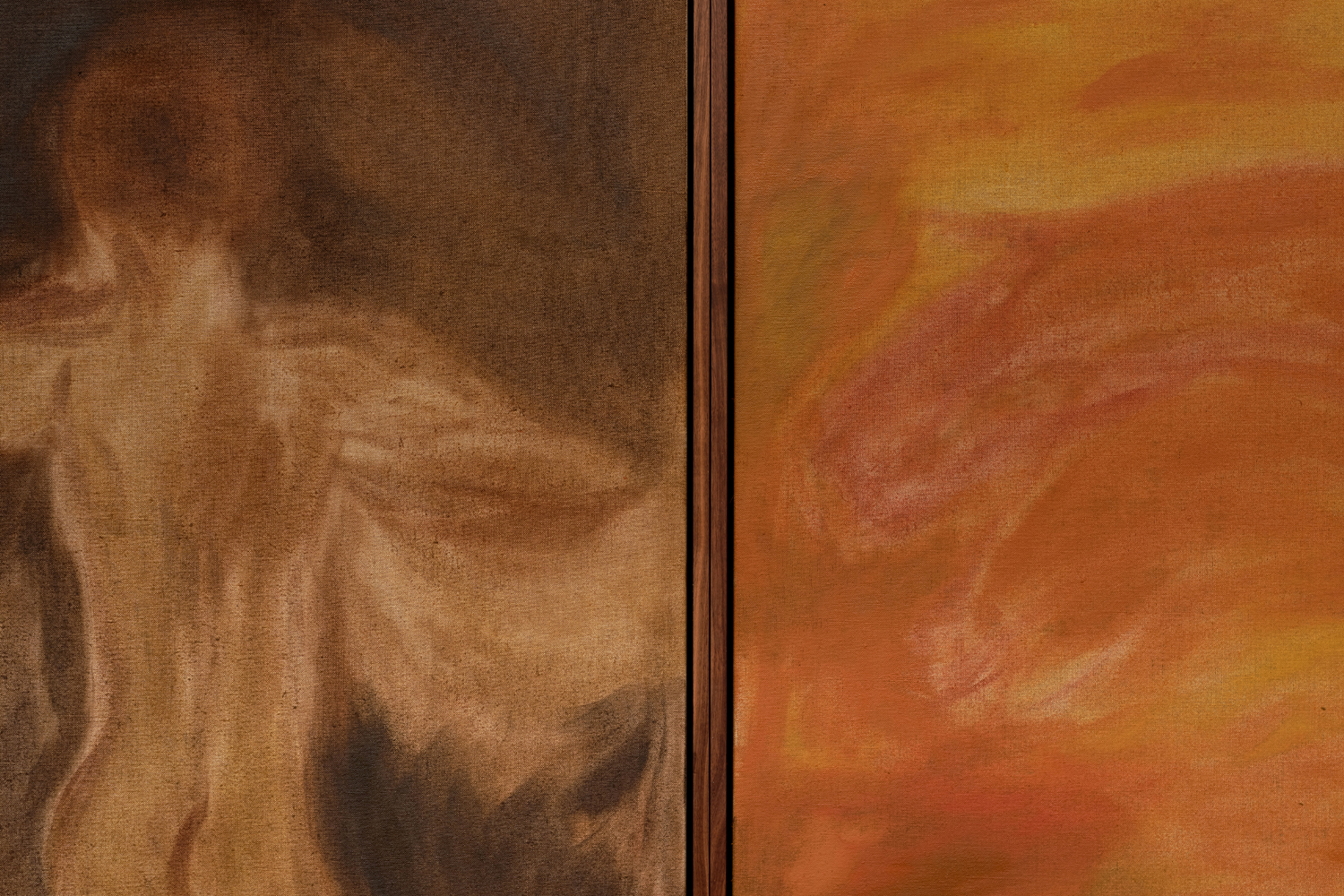Spring in Milan was absolutely dreadful: it started raining at the beginning of March and never — ever! — stopped. So, as my high-speed train approached Florence in early May, I was relieved to see some shy rays of sunlight behind the clouds. By the time I arrived at VEDA, the sun was fully out, almost as if it were there specifically for the opening of Dominique White’s solo show, “Destruction of Order.”
White’s fascination with light is central to this exhibition. Her understanding of how light interacts with space and material is evident in how her sculptures transform as daylight fades. The late afternoon sun, casting long shadows and bathing the room in a warm glow, imbues the works with a dynamic presence, as if they were relics slowly sinking into the depths of the sea. This effect is particularly resonant given White’s long-standing interest in aquatic Afrofuturism, a theme deeply ingrained in her practice since 2014. Living in Marseille, a city closely tied to the sea, has only deepened this connection, infusing her works with elements reminiscent of maritime life, such as the use of ship’s nets.
“Destruction of Order” marks a striking evolution from her previous work, embodying an exploration of chaos and transformation through a nuanced interplay of materials, light, and thematic depth. The show comprises five new pieces — on view for the first time at the gallery she’s been collaborating with for five years now — delving into the concept of the destruction of the nation-state using the same tools as “the master.” She’s been exploring this premise since her first exhibition in Germany at the end of 2023, “When Disaster Strikes” at Kunsthalle Münster, when she introduced what she terms a “cannibalistic prophecy.”
The exhibition’s title is borrowed from Interstellar Fugitives 2—Destruction of Order, the 2005 album by American music collective Underground Resistance. It sets the tone for the thematic undercurrents White navigates. The title underscores the artist’s connection to music as a tacit yet ever-present influence in the creative process. The album’s chaotic and prophetic nature mirrors the disruptive energy White seeks to capture and convey in her sculptures.
The materiality of the works is both heavy and light, reflecting a paradox that runs through the entire exhibition. Iron armatures arrived at the gallery directly from her studio, and these serve as the backbone for each piece. Yet, despite the substantial nature of these materials, there is an undeniable sense of suspension and fragility. The works destination Unknown and undetected (both 2024), for instance, can be seen as near mirror images of each other: one depicts a completed act of rebellion against the master, while the other evokes a state of anticipation. This duality adds a layer of temporal complexity, evoking questions about the timing and permanence of such acts.
White’s installation process was a work in progress until the exhibition’s opening, which confirms the importance of adaptability and the spatial context in her work. The final arrangement culminated in spontaneous decisions and responses to gallery space, allowing each piece to find its place organically. This approach aligns with her view that a space is never neutral; each environment interacts uniquely with the works, altering the viewer’s experience.
The influence of fire and charcoal in White’s latest works adds another dimension of transformation and destruction. These elements introduce a darker tone, resonating with the exhibition’s theme of chaos and order. The juxtaposition of these raw, elemental forces with the delicacy of the overall presentation highlights White’s ability to balance contrasting qualities, creating an atmosphere that feels both volatile and serene.
Notably, the variability of the sculptures amid changing light conditions enhances their ethereal quality. In shadow, certain pieces, like harnessing of the unknown storm (2024), placed in a corner of the gallery space, take on a seemingly sentient presence reminiscent of sentinels or ominous forewarnings. This variability underscores the temporal aspect of White’s work, suggesting a continuous evolution and interaction with the environment.
White’s “Destruction of Order” is a compelling exploration of chaos, rebellion, and transformation. She invites viewers to engage with the fluid and ever-changing nature of order and disorder. The work creates an immersive experience that challenges perceptions and evokes a profound sense of both presence and transience.

